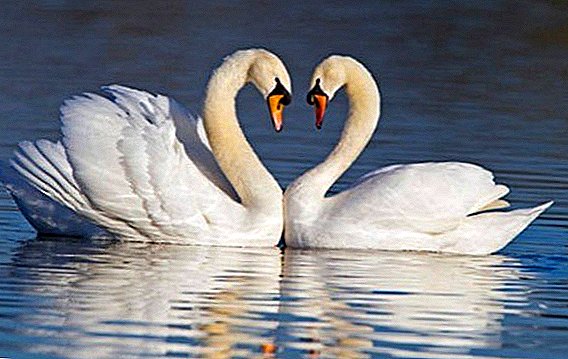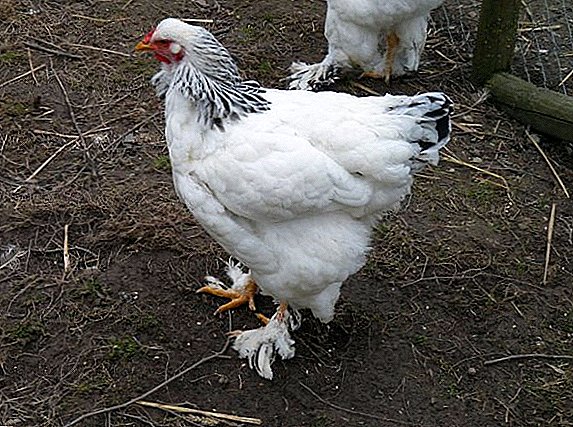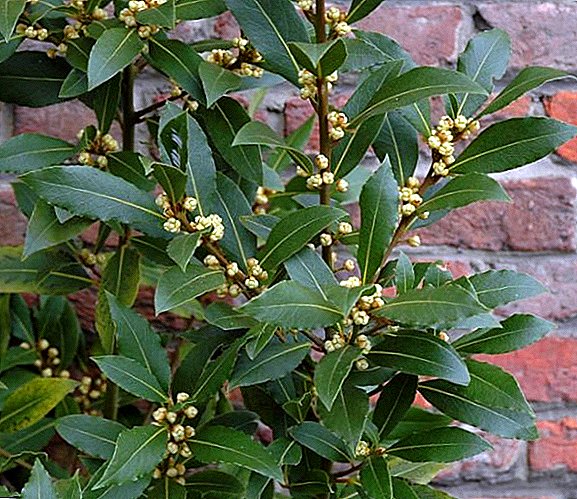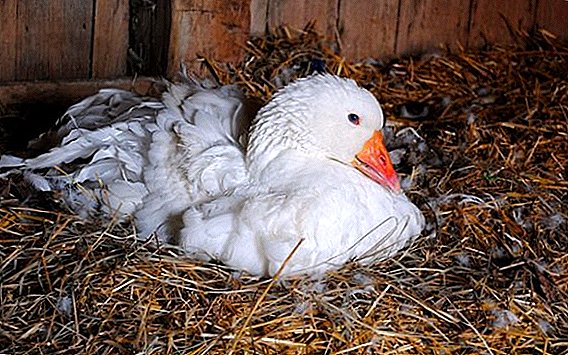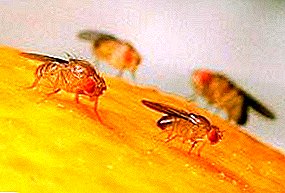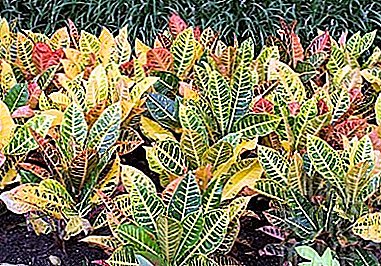
Bush begonia in the open field is very rare. Basically, the plant is grown in warm rooms, on balconies and window sills. This can make even a florist without experience.
However, despite the fact that the shrub begonia is quite unpretentious plant, for a beautiful and lush flowering you need to know the features of the plant and the main rules of caring for them at home. It is also important to know about the possible difficulties in growing as possible diseases and pests.
Botanical description and history
Bush begonia is a shrub that has numerous side shoots, similar to bamboo. They are branched, grow quite densely. For bush begonias are characterized by leaves of different sizes, color and shape. If she is properly looked after, she can bloom all the year round with graceful beautiful flowers, therefore her other name is ever-flowering.
The root of this plant is fleshy, not dividing into parts. Bushes can reach a height of 10 cm to 2 meters. There are perennial and annual varieties that are grown outside. The history of this species of plants begins with the expedition of Michel Begon, the governor of the island of Haiti and the botanist Charles Plume. The purpose of this trip was to study the flora and fauna of the West Indies. There they discovered this rare flower. In honor of Michel Begon, he was named.
Appearance and features
Flowers are:
- fringed;
- terry (about terry begonia and features of its cultivation, read this article);
- semi-double.
For begonia bush mainly decorative leafy varieties. On windowsills most often grow miniature bushes, which do not have symmetrical heart-shaped leaves. Very popular are the large large begonia species. These are bright red and coral begonias, which, if not cut, can grow up to 2 meters high (read about begonias with bright red leaves here, and a separate article is devoted to coral begonias). Large tall bushes are often planted in gardens and parks.
The leaves of this plant have different colors:
- brown;
- Dark red;
- green.
They are velvety and smooth, with spots, curls in the form of shells, contrasting veins. This plant forms a compact aboveground part. Due to the large, interlocking foliage, most of the pot is not visible.
A photo
Look at the photo of the plant:





Where and how to plant?
There are certain landing rules that are recommended to follow. For planting it is necessary that the pot at 1/3 was filled with drainage material, on top of which there should be 2-3 cm layer of charcoal. Due to this, the roots do not rot.
After begonia together with a lump of earth will be placed in a pot, the rest of the space must be filled with soil and watered. Landing is carried out in March, after the daylight will be longer. And before that, the tuberous begonias are sprouted in boxes, they do not need to be buried in the substrate. They should be in a bright place with a humidity of 60-70% and a temperature of 16-18 ° C.
Every year in the spring, the plant must be transplanted into a pot, which should be 2 cm wider than the previous one.
Important! Spray begonia is one of the easiest to grow. The plant has a luxurious shape due to the fact that in one bush can be up to 5 pieces of stems.
Lighting and location
The plant feels better, being in well-lit places, but that it does not fall into direct sunlight. For this, windowsills that face west and east are suitable. In the fresh air they are planted in a place where there is scattered light. Bushy begonia does not tolerate when the direction of light changes, therefore, it is not recommended to turn it.
Soil requirements
The soil for the flower can be bought in the store or cook yourself. Pour a small layer of sand at the bottom, then fill the pot halfway with leafy earth and add black earth and peat in equal proportions.
If the soil is prepared correctly, the spray begonia will grow well and bloom for a long time. The trunk will be strong, and the leaves are healthy and juicy.
Home care
Proper courting of begonia is to:
- watering;
- creating a certain humidity and temperature;
- top dressing;
- planting and trimming.
Watering
 The main thing in the care of this plant is uniform watering. The soil in the pot should not be wet, but slightly moist.
The main thing in the care of this plant is uniform watering. The soil in the pot should not be wet, but slightly moist.
Watering begonia should be soft water, using one of the methods:
- upholding;
- freezing;
- by filtration.
In winter, it should be done less frequently. The plant 2 times a week needs top dressing with any ready-made mineral fertilizers intended for flowering plants. It is best if they are in liquid form.
Humidity and temperature
Bushy begonias need moist air that can be arranged by spraying the space around this plant.
Important! When spraying, do not allow water to fall on the flowers and leaves. This can lead to their decay and loss of decoration.
To create the optimum humidity, it is enough to put a flowerpot with a flower in the pan with expanded clay poured into it, and pour water there. It is only necessary that the bottom of the pot does not stand in it. On hot summer days, windows with bush begonia on their windowsill must be protected with paper.
The flower will drop buds with sharp temperature changes and drafts. The best temperature for growing this plant is 20-25 ° C, in winter it is not less than 15 ° C. In winter, he begins a period of peace, growth stops, and for several weeks he does not bloom at all.
Transplant and pruning
Repot this flower is necessary annually. You can not move the begonia in a new pot with old soil, the soil must be taken fresh. The procedure must be carried out with all care.
- To clean the roots from the sand they are immersed for 2 minutes in a weak solution of potassium permanganate.
- After that, noticeable sore spots are cut off.
- After transplanting the plant is watered often.
Just transplanted flower is not recommended to immediately put in the sun. To form a new crown, it is necessary to trim it a little. The rejuvenation procedure is necessary because the lower part of the stem of an adult plant becomes naked. For this, the tops of the bare stems are cut and rooted.
Common diseases and pests
- Bush begonia suffers most from aphids and spider mites. The presence of whitish plaque and stickiness on its leaves indicates its infection with these pests. Washing with warm soap and subsequent treatment with insecticides will help.
- One of the most common diseases is gray mold, with brown spots on the leaves. The reason lies in the high humidity. For disposal, you need to normalize watering and to observe the optimum level of humidity. With a strong infection, the plant must be destroyed.
- Another disease that attacks bush begonia is powdery mildew. About it says the appearance on the leaves of white spots. The plant can fall ill with mildew if it is sprayed and kept in a room with a high temperature.
- cuttings - apical shoots;
- seeds;
- division of the bush.
- The cutting is carried out in the spring.
- To do this, use the young shoots.
- They are cut with a sharp knife and put in the water.
- The roots on the blanks appear quickly.
- Then they just need to be planted in small pots.
- By reproduction by the method of dividing a bush is meant its separation together with a part of the root and planting in separate containers. All the while begonia will take root, it should be in a warm and bright room.
- Reproduction by seeds.
- For planting seeds need to take a wide flat container.
- Pour the earth and plant seeds on it.
- They should be slightly pressed down with glass, covered with film and put in a warm place.
- The first shoots can be waited after 14-21 days.
- With the appearance of 2-3 leaves, a picking is carried out.
- The rapid development of the plant contributes to planting density.
- It is necessary to dive sprouts 3 times, after which they are planted in separate pots.
- Planted flowers should be in a room with a temperature of 15-17 ° C.
Breeding
 For the reproduction of this type of flower rhizomes are not used.
For the reproduction of this type of flower rhizomes are not used.
Spray begonia multiplies:
Flower growers love bush begonia for its long and abundant flowering. This type of indoor plants recognized as the most enduring. It looks great in vertical compositions.


